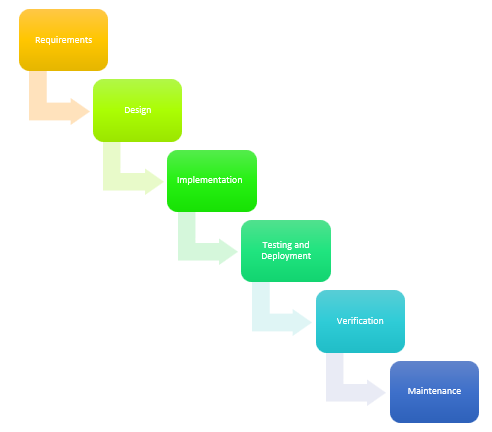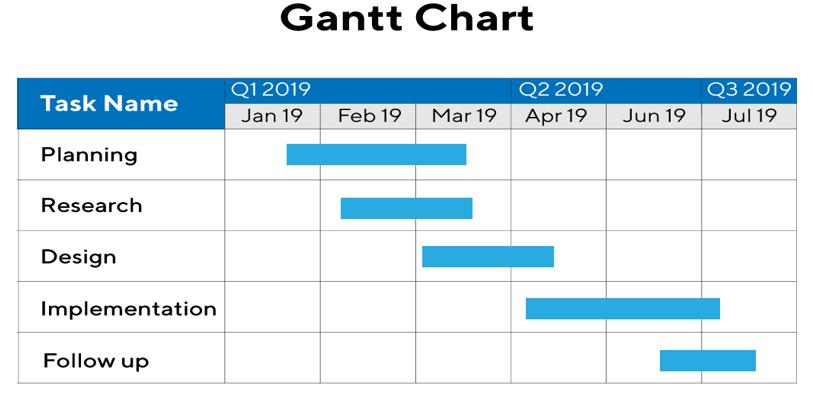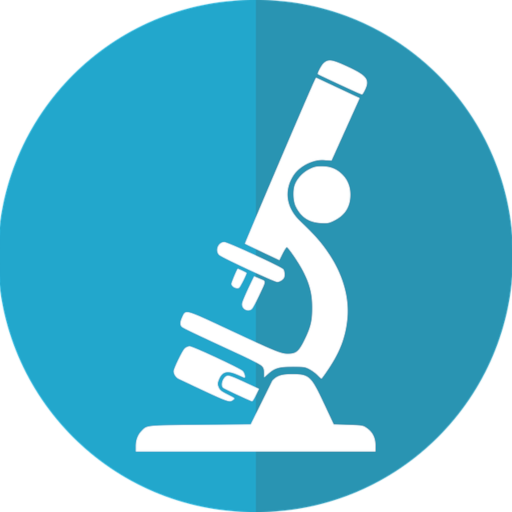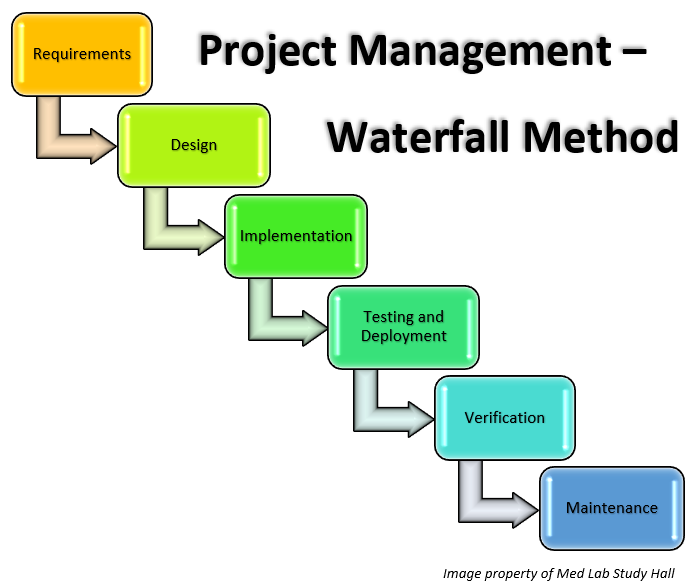For the third part of the medical laboratory project management series, we will discuss the Waterfall Method. Unlike other methodologies, Waterfall relies on a more step-by-step process. Exactly how Waterfall methodology works and the best types of projects to use it for will be explained in this post.
Waterfall Method Explained
Waterfall methodology is linear. One step or phase of the project must be completed before moving on to the next one. Essentially, the steps or phases flow down a cascade like a waterfall. Thus the name.
In the Waterfall method, the success of each step and ultimately the final outcome is dependent on the previous step. If the work in Step 1 is lackluster or incomplete, then Step 2 will not be a success.

The Waterfall method has six (6) distinct phases: requirements, design, implementation, system testing and deployment, verification, and maintenance. Using this type of methodology, a lot of upfront planning is required. Everything needs to be spelled out beforehand. In order to do this a tool called the Gantt Chart is most often used. This allows the team to visualize the project, seeing the dependencies and milestones of each step.
Waterfall Method Example: Laboratory Design
In the laboratory, the Waterfall method would be most useful when building a new laboratory. With a large project like this, scheduling, time management, and planning are extremely important. If the project is not planned properly this could mean backtracking to fix things, costing time and money. Would it make much sense to have the painters come in to paint the lab before the demolition crew has even started? No, it wouldn’t. Using this method avoids costly mistakes such as this. Let’s take a closer look at how to apply it.
Requirements
This is the phase when all requirements are identified, allowing every other step of the project to be planned out ahead of time. Requirements are everything needed to make the project successful. In this case, it would include figuring out what departments and staff need to be involved, identifying any new equipment/reagent purchases that need to be made, sourcing any outside contractors or vendors, and confirming any regulations that need to be followed.
Design
This consists of two distinct phases: logical design and physical design.
Logical design is the phase when the team brainstorms all possible solutions. What does this mean in regards to the new laboratory build? The team will decide how the laboratory will look, including:
- how much counter space and storage are needed,
- where the instruments are placed,
- what kind of ventilation is required,
- how many fire exits are needed,
- if any new equipment is needed,
- if any new wall outlets need to be installed and how many of those need to be on emergency power,
- how many new internet ports and phone lines need to be installed,
- flooring,
- construction,
- paint color,
- furniture, and
- technology.
All of this will need to be analyzed.
Physical design is where these theoretical ideas are made concrete. This is where the Gantt chart becomes useful. This allows the team to map out all requirements visually and in a manner that is easily communicated with other stakeholders. In the actual project, Gantt chart specific tasks, subtasks, assignments, due dates, progress, dependencies, and updates are displayed. Due to space constraints, the chart below is an abbreviated example.

Implementation
Unlike other project management methodologies, the implementation phase in Waterfall should be the shortest phase. This is because extensive planning was done up front. All tasks should be laid out beforehand and all the team has to do is complete the task.
During this phase, all tasks listed out on the above Gantt chart will be completed. Planning and making the Gantt chart is a tedious process, however, it is an essential tool for the implementation phase. Implementation includes the following:
- Assigning team tasks – Based on the Gantt chart these tasks will be assigned.
- Monitoring and tracking – Ensuring that all tasks are completed on time as per the schedule on the Gantt chart and making any adjustments if things start to bottleneck.
- Managing resources and workload – Re-allocating resources based on problems that may occur and balancing overall workload.
- Report to Stakeholders – Reporting updates, problems, and progress to administration.
During the implementation phase, characteristics of different project management methodologies may start to be utilized. Recalling from Part 2 of this series, the critical path method uses methodology that requires the shortest time to completion. This means that activities that are not dependent on each other can be performed in parallel. For example, buying supplies and sourcing contractors can happen in parallel with each other, as each of these tasks does not depend on each other. The same goes for validating different instrumentation. Validating the hematology analyzer has no bearing on the validation of the urinalysis machine.
System Testing and Deployment
This phase could technically be considered part of implementation. Testing is an extensive process and it makes more sense to have this as a separate step. In this phase, most of the testing will revolve around ensuring that all instrumentation is working correctly.
This includes:
- Ensuring that all instrumentation interfaces properly with lab middleware, LIS, and EMR software.
- Ensuring that furniture placement, instrument placement and storage placement contributes to a conducive and safe working environment.
- Ensuring all regulatory requirements are met. (CAP, FDA, State DOH, Joint Comission etc.)
Due to the extensive planning at the beginning of the project, any problems encountered by this point should be relatively minor. During this phase, the team will perform any tweaking to the new lab in order to ensure proper working order. The last task in this phase is the “go-live” for the new laboratory.
Verification
During this phase, the project is wrapped up. Team members ensure that all outside vendors are paid and released from the project. Any paperwork documentation is signed off by appropriate parties. This includes instrument validations, maintenance documentation from engineering, LIS validations, any new technologist trainings or inservices, and any communications that may need to be sent out to inform other departments of changes to processes.
Maintenance
This is performing any necessary tasks to ensure the proper functioning of the new laboratory.
Conclusion
To sum up, Waterfall project management methodology is best used on larger projects where there is little room for error. Each phase of the project can’t move forward until the previous phase is complete and the success of subsequent phases depends on the quality of work from the previous phase. The bulk of this method is taken up by the planning phase. The planning phase is the most important phase, as all problems ideally need to be thought of and mitigated before the project is started.

